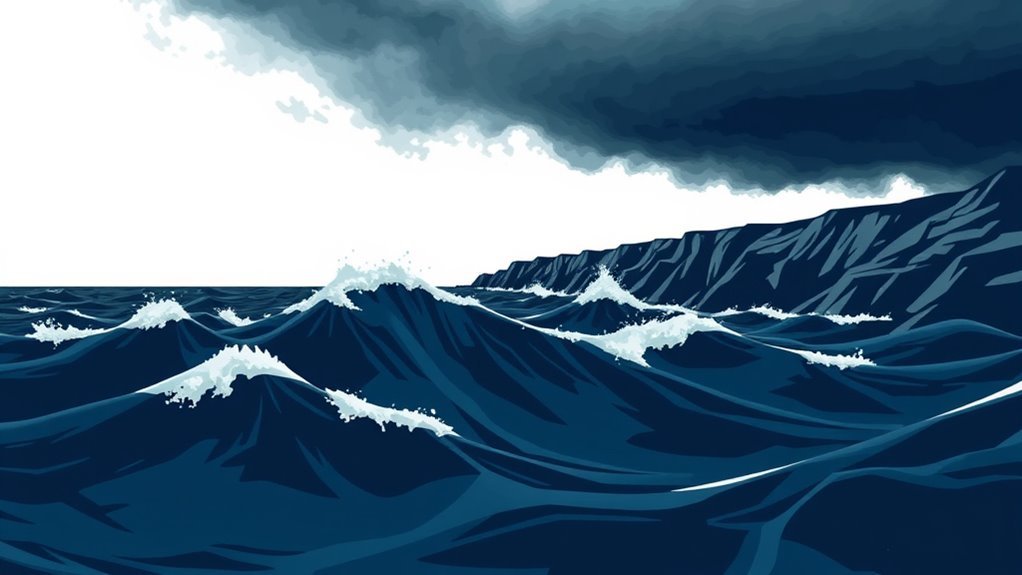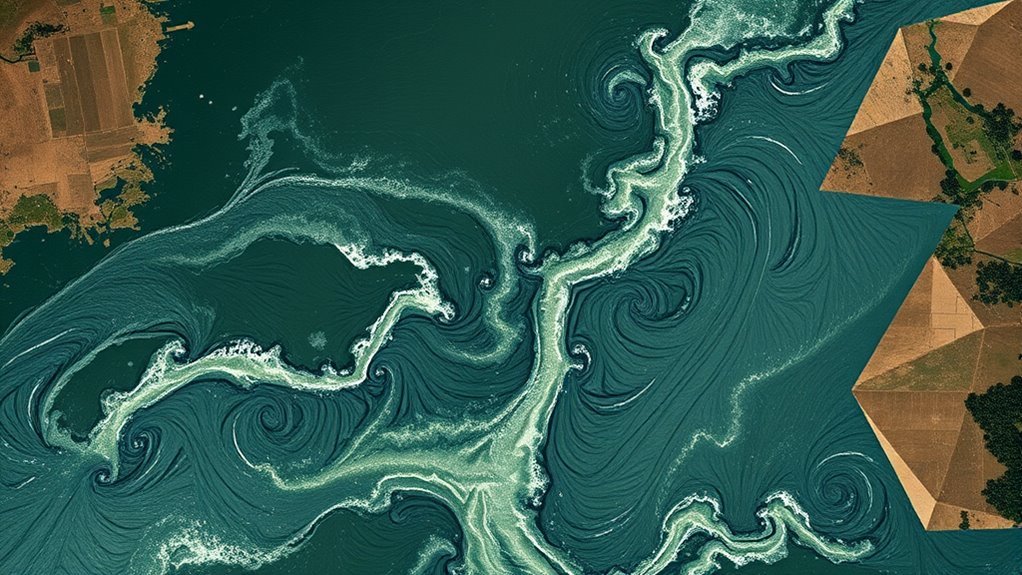The most intense squalls in recorded history include events like the 1938 New England Hurricane and the 2011 Joplin Tornado. These storms caused widespread destruction, leading to considerable loss of life and severe damage to infrastructure. The Great Storm of 1987 prompted advancements in weather forecasting and emergency preparedness. Recent phenomena, such as the 2020 Midwest Derecho, reveal the ongoing threat of extreme weather events. The impacts of these squalls have historically driven changes in disaster response strategies.
Main Points
- The Great Storm of 1987 caused extensive damage in southern England, prompting improvements in meteorological forecasting and emergency preparedness.
- The 1938 New England Hurricane resulted in over 600 fatalities and $400 million in damages, leading to new building codes for disaster resilience.
- The 2011 Joplin Tornado, with winds over 200 mph, devastated the area, highlighting the severe impacts of EF5 tornadoes on communities.
- The 1970 Bhola Cyclone in East Pakistan caused up to 500,000 deaths, driving significant changes in disaster response policies in the region.
- The 2020 Midwest Derecho left over a million residents without power, showcasing the destructive capacity of straight-line wind storms.
The Great Storm of 1987: A Turning Point in Weather Awareness
Although the Great Storm of 1987 struck unexpectedly, it marked a considerable shift in public perception and response to severe weather events. The storm swept across southern England on the night of October 15, releasing winds exceeding 100 mph that uprooted trees, damaged homes, and left millions without power.
Its ferocity highlighted the limitations of meteorological predictions at the time, as forecasters failed to anticipate the storm's intensity and trajectory. In the aftermath, the disaster prompted a reevaluation of forecasting techniques and emergency preparedness protocols.
Communities began to acknowledge the need for better communication regarding severe weather threats, leading to increased investment in technology and infrastructure. This storm not only affected the physical terrain but also transformed societal attitudes toward weather forecasting, emphasizing the importance of accurate predictions and timely warnings for future storms.
The Great Storm of 1987 served as a catalyst for change in how weather events were perceived and managed.
The 1938 New England Hurricane: A Devastating Squall

The 1938 New England Hurricane stands as one of the most powerful and destructive storms in recorded history.
With wind speeds reaching extraordinary levels, it caused widespread devastation across the region.
The aftermath prompted considerable recovery efforts that reshaped both infrastructure and emergency response strategies in the years to follow.
Wind Speeds and Damage
As wind speeds soared to record levels during the 1938 New England Hurricane, the storm left a trail of destruction that reshaped the region's topography. Sustained winds reached up to 120 miles per hour, uprooting trees and demolishing homes.
Coastal areas faced severe flooding and erosion, while inland communities experienced extensive roof and structural damage. The sheer force of the wind propelled debris, turning commonplace objects into dangerous projectiles.
Power lines were downed, plunging thousands into darkness. The devastation was not limited to property; agriculture suffered immensely, with crops flattened and livestock lost.
The hurricane's ferocity marked it as one of the most notable weather events in American history, fundamentally altering the topography and lives of those in its path.
Aftermath and Recovery Efforts
In the wake of the 1938 New England Hurricane, communities faced the intimidating task of recovery amid widespread destruction. The storm left over 600 dead and caused approximately $400 million in damages, leading to a tremendous need for rebuilding efforts.
Local governments and federal agencies mobilized quickly, providing emergency relief and resources. Volunteers played a vital role, assisting in debris removal and offering support to displaced families.
Infrastructure, including roads and bridges, required urgent repairs to restore connectivity. As communities began to heal, new building codes were introduced to improve resilience against future storms.
The hurricane significantly changed the region's approach to disaster preparedness, emphasizing the importance of effective planning and collaborative recovery efforts in the face of natural calamities.
The 2011 Joplin Tornado: A Tragic Example of Nature's Fury
A devastating force of nature struck Joplin, Missouri, on May 22, 2011, when an EF5 tornado swept through the city.
With winds exceeding 200 miles per hour, the tornado carved a path approximately one mile wide and six miles long. It obliterated neighborhoods, uprooted trees, and demolished buildings, including schools and hospitals.
The aftermath was catastrophic, with over 150 lives lost and more than a thousand injured. The destruction left around 8,000 homes damaged or destroyed, displacing thousands of residents.
Emergency response teams rushed to the scene, providing medical assistance and searching for survivors amid the debris.
The tornado's sheer intensity and scale highlighted the potential devastation of severe weather phenomena.
In the wake of this tragedy, the community began a long road to recovery, demonstrating resilience and solidarity in the face of nature's fury.
The Joplin tornado remains a stark reminder of the power and unpredictability of such intense squalls.
The 1970 Bhola Cyclone: A Catastrophic Event in Bangladesh

The 1970 Bhola cyclone stands as one of the deadliest tropical cyclones in recorded history, striking East Pakistan (now Bangladesh) on November 12. The storm generated catastrophic winds and storm surges, leading to unparalleled devastation and loss of life. An estimated 300,000 to 500,000 people perished, making it a notable humanitarian disaster.
- The cyclone reached wind speeds of up to 115 mph.
- It produced a storm surge of over 20 feet.
- Major cities, including Dacca, faced extensive flooding.
- Infrastructure damage was widespread, affecting transportation and communication.
- The event prompted international relief efforts and highlighted the need for better disaster preparedness.
The aftermath of the Bhola cyclone spurred changes in policies and practices regarding disaster response in the region, drawing global attention to the vulnerabilities faced by coastal communities.
The 2010 Pakistan Floods: A Deluge of Destruction

The 2010 Pakistan floods emerged as one of the most devastating natural disasters in the region's history, driven by unparalleled monsoon rains and inadequate infrastructure.
The resulting humanitarian crisis highlighted the immediate needs of millions displaced and affected by the deluge.
In addition, the long-term recovery challenges faced by the nation underscored the complexities of rebuilding and preventing future disasters.
Causes of the Floods
Numerous factors contributed to the catastrophic floods in Pakistan in 2010, creating a perfect storm of environmental conditions.
The region experienced extraordinary monsoon rains, coupled with rapid snowmelt from the surrounding mountains.
Additionally, deforestation exacerbated soil erosion, reducing the land's ability to absorb rainfall.
Poor drainage systems in urban areas further intensified the flooding, while climate change played a role in altering weather patterns.
- Intense monsoon rains exceeding 400% of average levels
- Rapid snowmelt from the Himalayas
- Deforestation leading to increased soil erosion
- Inadequate urban drainage infrastructure
- Climate change-induced shifts in weather patterns
These elements combined to trigger one of the most devastating flood events in the region's history.
Humanitarian Crisis Overview
As catastrophic floods swept across Pakistan in 2010, the impact on the population was notable and devastating. Millions were displaced as entire communities were submerged, with estimates suggesting that approximately 20 million individuals were affected.
The destruction of homes, infrastructure, and farmland led to dire shortages of food, clean water, and medical supplies. The humanitarian crisis escalated as diseases spread rapidly in the stagnant waters, exacerbated by overcrowded relief camps.
International aid poured in, yet logistical challenges hindered timely assistance. The psychological toll on affected families was deep, as they faced loss and uncertainty.
This disaster underscored the vulnerabilities of communities in disaster-prone regions, highlighting the urgent need for effective response mechanisms in humanitarian crises.
Long-term Recovery Challenges
Despite international aid efforts, long-term recovery from the 2010 Pakistan floods presented considerable challenges for the affected communities. The flooding devastated infrastructure, agriculture, and livelihoods, leaving many without homes or means of support. Recovery was hindered by various factors, including political instability and insufficient resources.
Key challenges included:
- Displacement: Many families remained in temporary shelters for years.
- Health Issues: Waterborne diseases surged due to contaminated water sources.
- Economic Strain: Loss of crops led to food insecurity and poverty.
- Reconstruction Delays: Infrastructure rebuilding was slow, hampering daily life.
- Government Inefficiency: Bureaucratic hurdles obstructed aid distribution and recovery plans.
These compounded issues greatly impeded the long-term resilience of communities affected by the disaster.
The 2004 Indian Ocean Tsunami: A Reminder of Nature's Power
When a massive undersea earthquake struck off the coast of Sumatra on December 26, 2004, it released one of the deadliest natural disasters in history: the Indian Ocean tsunami.
This catastrophic event generated waves reaching heights of up to 30 meters, devastating coastal communities across multiple countries, including Indonesia, Thailand, and Sri Lanka. The tsunami claimed the lives of over 230,000 people and displaced millions more, highlighting the indiscriminate power of nature.
In addition to the immediate loss of life, the disaster caused extensive damage to infrastructure, economies, and ecosystems. Rescue and recovery efforts faced immense challenges due to the scale of destruction and the need for international aid.
The Indian Ocean tsunami serves as a stark reminder of the vulnerabilities faced by coastal populations and the importance of preparedness and early warning systems to mitigate the impact of such overwhelming natural forces in the future.
The 2020 Midwest Derecho: A Rare and Destructive Wind Event
On August 10, 2020, an unusual weather phenomenon struck the Midwest United States, causing widespread destruction across several states. This event, known as a derecho, featured powerful, straight-line winds that reached up to 140 miles per hour. The storm system traveled over 770 miles, impacting areas from Iowa to Illinois and beyond.
Key effects of the 2020 Midwest derecho included:
- Severe wind damage: Thousands of trees and power lines were downed.
- Widespread power outages: Over a million residents were left without electricity.
- Agricultural impact: Extensive damage to crops, particularly corn and soybeans.
- Injuries reported: Numerous individuals sustained injuries due to falling debris.
- Emergency response: Local authorities mobilized to assist with recovery efforts.
This derecho exemplified the destructive potential of severe wind events, prompting discussions about preparedness and climate resilience in affected regions.
Common Questions
How Are Squalls Different From Regular Storms?
Squalls differ from regular storms primarily in their intensity and duration. They are brief, sudden bursts of strong winds and heavy rain, while regular storms tend to last longer and develop more gradually, including broader weather systems.
What Safety Measures Should Be Taken During a Squall?
During a squall, individuals should seek shelter indoors, avoid windows, secure loose objects, and stay informed through weather updates. It is essential to have an emergency kit prepared and to remain calm throughout the event.
Can Squalls Occur in Any Season?
Squalls can indeed occur in any season. These sudden, intense wind bursts are not limited by temperature or time of year, manifesting unpredictably across various climates, often accompanied by sudden rain or changes in weather patterns.
How Do Meteorologists Predict Squalls?
Meteorologists predict squalls by analyzing atmospheric conditions, utilizing satellite imagery, radar data, and computer models. They monitor temperature changes, wind patterns, and humidity levels, allowing for timely warnings and preparation for potential severe weather events.
What Historical Records Exist for Squall Events?
Historical records of squall events include ship logs, weather journals, and meteorological archives. These documents detail occurrences and impacts, providing observations into frequency, intensity, and regional variations, contributing to the understanding of squall phenomena over time.

